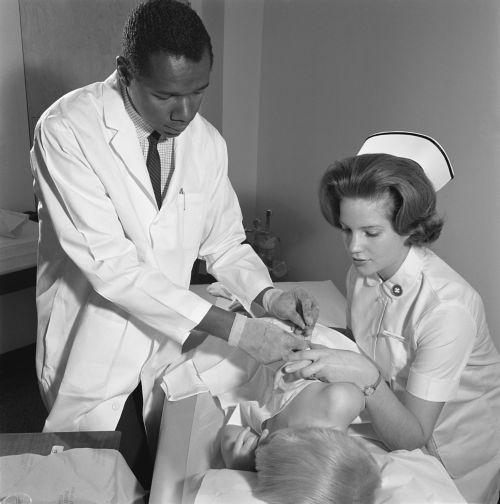Within the St. Jude Children’s Research Hospital Graduate School of Biomedical Sciences, we build on this strong history, which includes pioneers in education as well as medicine.
In 1965, John Wesley Smith, MD, was only three years out of medical school when he agreed to move to the South and join an upstart hospital during an era of intense social unrest. When Smith was not working in the lab or clinic, he served as an instructor of microbiology at the University of Tennessee College of Medicine.
Former St. Jude Director Donald Pinkel, MD, recalled the first time Smith lectured to the medical students, Allan Granoff, MD, peeked in to see the reaction.
“John got up there, and they all looked with utter amazement in their faces at this Black professor that was going to give them this lecture. Then as soon as John opened his mouth, they were down in their notes, taking down everything he said. … Typical medical students!” he recalled.
Building a More Inclusive Future
More recently, we have begun a concerted, thorough and intentional effort to advance diversity and strengthen our inclusivity at St. Jude Children’s Hospital.
The Diversity and Inclusion Office serves as the consistent driver for diversity and inclusion efforts throughout the institution. These efforts include a multi-phased project to improve tools, practices and data gathering. Within the Graduate School, our students are organizing events and making sure all students are visible and their experiences valued.
Research that Makes a Difference
The first research grant St. Jude received was for sickle cell disease. In 1983, a St. Jude patient with leukemia who also had sickle cell disease was the world’s first person to be cured of the disease through a stem cell/bone marrow transplant.
More recently, St. Jude has led the local efforts of the national initiative to end the HIV epidemic.
In November 2019, St. Jude hosted a meeting to discuss the challenges and issues that prevent patients from receiving regular care, share successful innovative approaches and discuss potential solutions to help reduce HIV rates. St. Jude has a goal of zero new cases in Shelby County, where St. Jude is located, by 2030.


